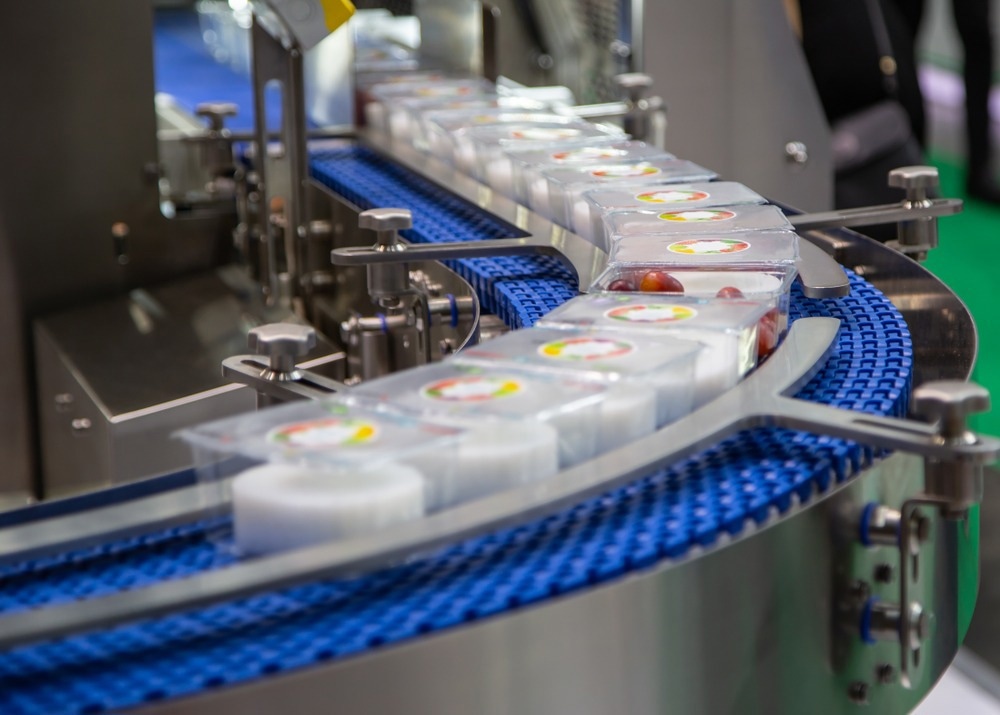Robots were introduced to industry first in the automotive sector, with leading companies like Ford in the United States and Honda in Japan innovating with automation to enable mass production of cars in the twentieth century.
Now, robots are deployed widely across numerous industries and industrial sectors, and food manufacturing is no exception. However, producing food comes with its own challenges that robots must contend with or, in some cases, solve. The industry works with long and complicated supply chains, extremely tight profit margins, and relatively high volume and throughput operations. Contamination and safety are of the utmost importance, as well.
To meet these challenges, the food robotics sector has grown significantly since the introduction of the first packaging and palletizing robots in the 1980s. Market analysts predict the market for food robotics will grow to $4 billion by 2026, at a compound annual growth rate (CAGR) of 13.1% from $1.9 billion in 2020.
Today, most food producers employ at least one robot in their processes.

Image Credit: Itsanan/Shutterstock.com
Packaging and Palletizing Needs
The food industry has recently had to respond to significant social and demographic changes. Since the start of this millennium, there has been a worldwide increase in the ratio of private households that only have one occupant against households with couples, families, or friends living together.
The UK’s Office of National Statistics (ONS) published data a few years ago showing that over a quarter of households in the country only have one occupant. The Labor Force Survey (LFS) also recently found that a third of households in Europe are classed as single occupants.
This trend puts significant pressure on the food industry to satisfy demands for single-portion servings of ready-made and pre-packaged food products. As a result, packaging and palletizing tasks have become increasingly complex.
Retailers, operating in significantly competitive markets, have also become much more dynamic with their special offers and pricing strategies – a dynamism itself built upon automation technologies. This also places high demands on packaging and palletizing operations.
In the 1980s, food packaging was one of the first areas in the industry to deploy robots. Robots employed in these tasks include pick and place robot arms, case packers, and slicing machines.
Applications for Robots in Food Packaging and Palletizing Today
Picking and Placing Randomly Oriented Items
Processed food tends to be produced in consistent sizes and shapes, which makes it relatively simple to handle them with grippers attached to robot arms or gantry systems. However, items often come down the conveyor belt in random orientations and distributions.
Robots are a popular solution for packaging these products because they can quickly identify, align, and place the item where it is needed without human intervention. Without robots, manufacturers would need to use fixturing, which is less dynamic and can take up lots of room on the factory floor.
Depanning and Denesting
Before baked goods can be placed into packaging, they need to be removed from the baking tray or pan, which is known as depanning. Robots depan by picking up baked goods with a vacuum or small pins.
Next, robots need to pick empty packages from a stack or hopper, referred to as denesting. Denesting robots are often linked with depanning robots to package baked goods effectively.
Secondary Packaging
Secondary packaging is performed after food has been sealed. Examples include bundling items into multipacks or grouping several items together in a box or case.
Sometimes, collaborative robots or cobots are employed to work alongside humans in secondary packaging operations. This requires safety features such as strictly delineated work zones for humans or robots, soft-to-touch robots, and slow-moving robots with accessible kill switches.
Palletizing
Palletizing or tertiary packaging takes boxes of items and readies them for shipping out of the factory, typically by stacking them on pallets and then wrapping them in film. Palletizing is an established role for robots in the food and beverage industry, with palletizing robots widely adopted throughout the sector.
The Future of Robotic Packaging and Palletizing
While the role of robots in packaging and palletizing operations is now well-established, there are still innovations coming out of the industry that continue to reshape how processed food is manufactured.
In particular, remote monitoring and Internet-of-Things (IoT) technologies are being introduced to robotic packaging and palletizing systems. This enables producers to build a granular, dynamic dataset containing information on all stages of the production cycle (a “digital twin”), and then apply analysis and artificial intelligence (AI) to optimize each stage.
Advances in collaborative robotics will lead to more human-to-robot interactions in the workplace. As robots become softer, slower, and more intuitive to work around, they can be trusted to work in closer proximity to humans. This reduces inefficiencies in robot-assisted systems, for example, by enabling humans and robots to work simultaneously.
Related to this trend, robot technologies are becoming more flexible as well. This means that one robot can do more tasks than before, and can often be reprogrammed by non-specialist operatives on the ground
References and Further Reading
Food Robotics Market. (2020) Markets and Markets. Available at: https://www.marketsandmarkets.com/Market-Reports/food-robotics-market-205881873.html.
Gislam, S. (2019). The digitalization of food palletizing. Industry Europe. Available at: https://industryeurope.com/sectors/technology-innovation/the-digitalization-of-food-palletizing/.
Owen-Hill, A. (2022). Top 7 Robotic Applications in Food Packaging. Robotiq. Available at: https://blog.robotiq.com/top-7-robotic-applications-in-food-packaging.
Disclaimer: The views expressed here are those of the author expressed in their private capacity and do not necessarily represent the views of AZoM.com Limited T/A AZoNetwork the owner and operator of this website. This disclaimer forms part of the Terms and conditions of use of this website.